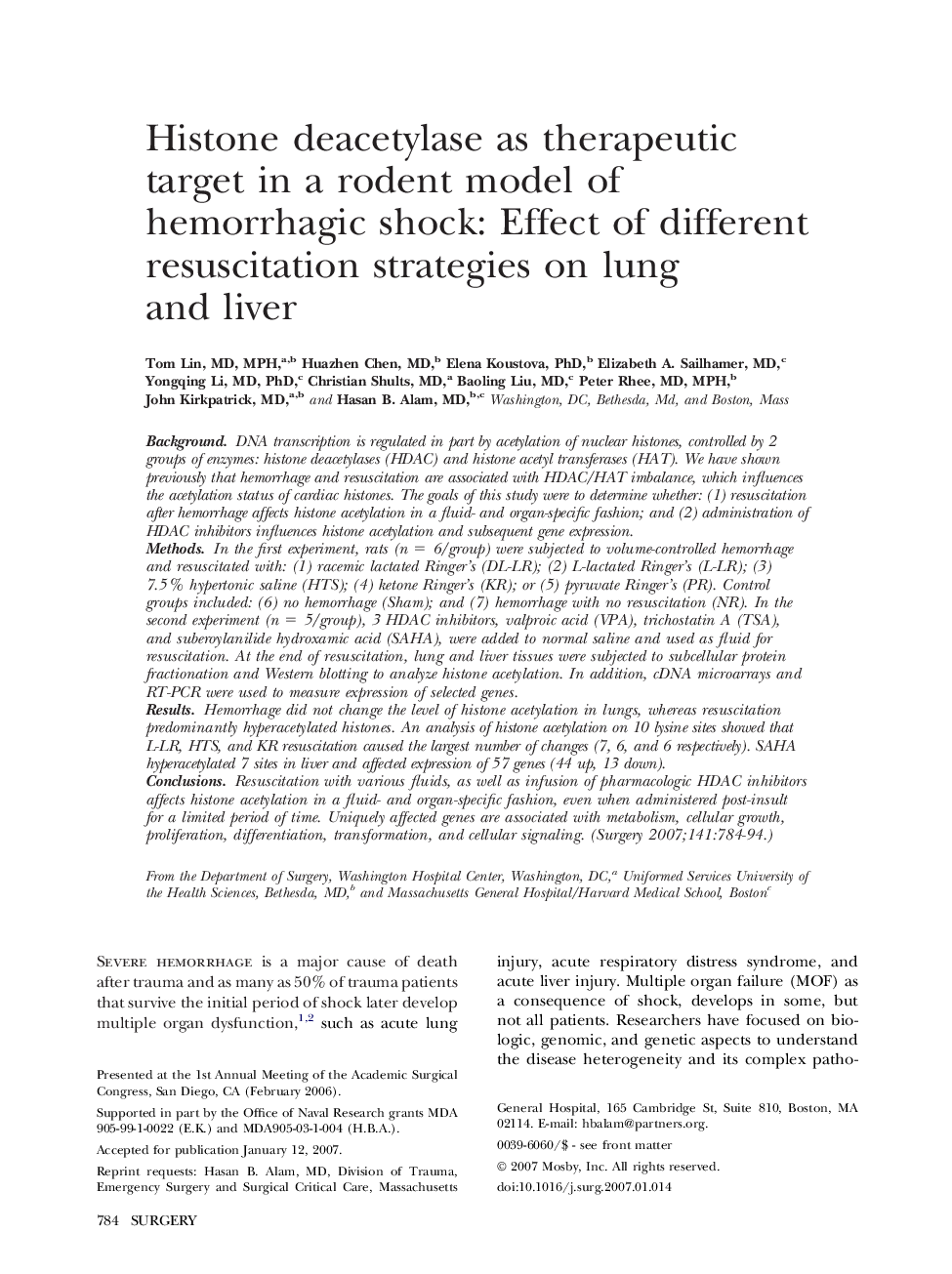| Article ID | Journal | Published Year | Pages | File Type |
|---|---|---|---|---|
| 4310363 | Surgery | 2007 | 11 Pages |
BackgroundDNA transcription is regulated in part by acetylation of nuclear histones, controlled by 2 groups of enzymes: histone deacetylases (HDAC) and histone acetyl transferases (HAT). We have shown previously that hemorrhage and resuscitation are associated with HDAC/HAT imbalance, which influences the acetylation status of cardiac histones. The goals of this study were to determine whether: (1) resuscitation after hemorrhage affects histone acetylation in a fluid- and organ-specific fashion; and (2) administration of HDAC inhibitors influences histone acetylation and subsequent gene expression.MethodsIn the first experiment, rats (n = 6/group) were subjected to volume-controlled hemorrhage and resuscitated with: (1) racemic lactated Ringer’s (DL-LR); (2) L-lactated Ringer’s (L-LR); (3) 7.5% hypertonic saline (HTS); (4) ketone Ringer’s (KR); or (5) pyruvate Ringer’s (PR). Control groups included: (6) no hemorrhage (Sham); and (7) hemorrhage with no resuscitation (NR). In the second experiment (n = 5/group), 3 HDAC inhibitors, valproic acid (VPA), trichostatin A (TSA), and suberoylanilide hydroxamic acid (SAHA), were added to normal saline and used as fluid for resuscitation. At the end of resuscitation, lung and liver tissues were subjected to subcellular protein fractionation and Western blotting to analyze histone acetylation. In addition, cDNA microarrays and RT-PCR were used to measure expression of selected genes.ResultsHemorrhage did not change the level of histone acetylation in lungs, whereas resuscitation predominantly hyperacetylated histones. An analysis of histone acetylation on 10 lysine sites showed that L-LR, HTS, and KR resuscitation caused the largest number of changes (7, 6, and 6 respectively). SAHA hyperacetylated 7 sites in liver and affected expression of 57 genes (44 up, 13 down).ConclusionsResuscitation with various fluids, as well as infusion of pharmacologic HDAC inhibitors affects histone acetylation in a fluid- and organ-specific fashion, even when administered post-insult for a limited period of time. Uniquely affected genes are associated with metabolism, cellular growth, proliferation, differentiation, transformation, and cellular signaling.
